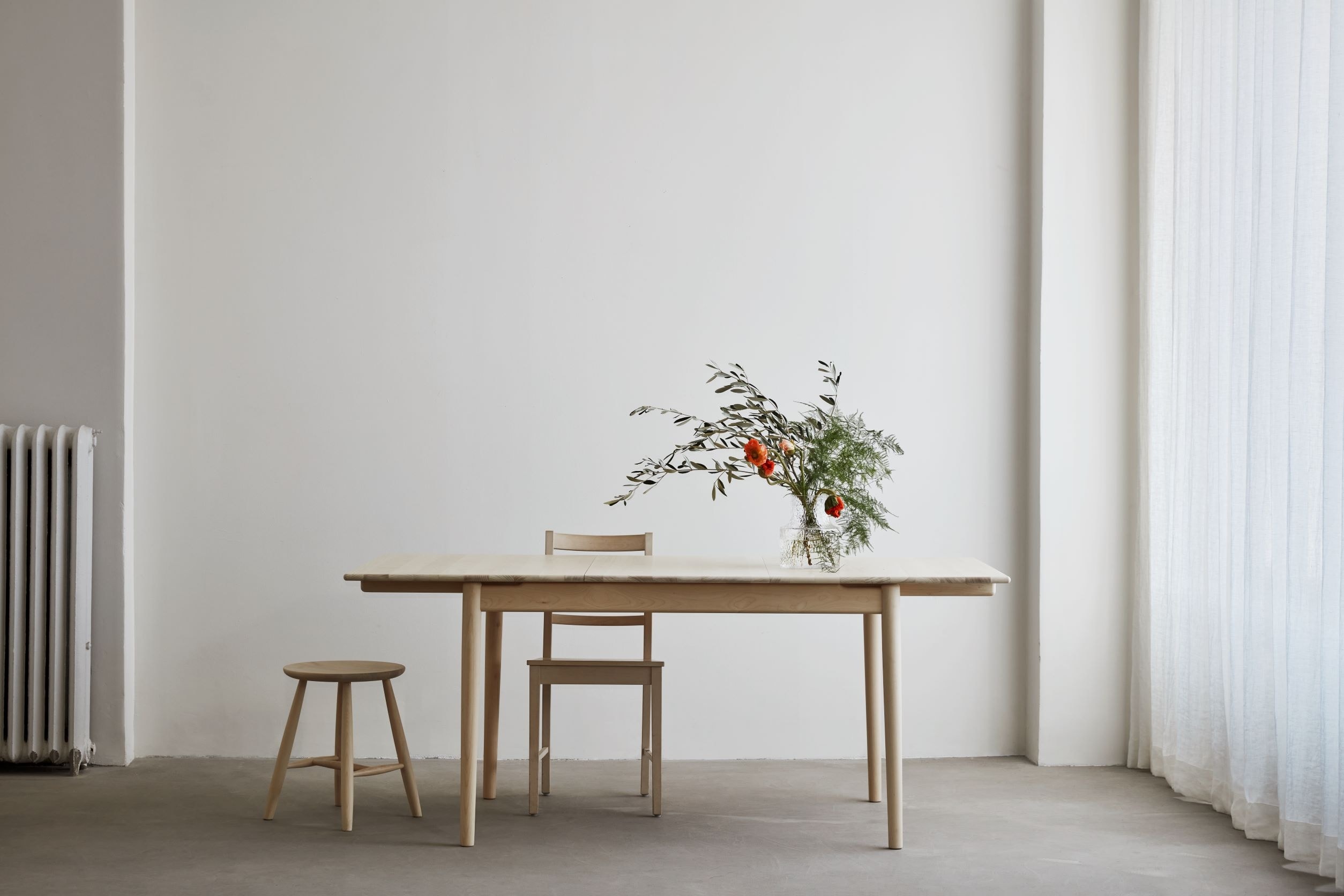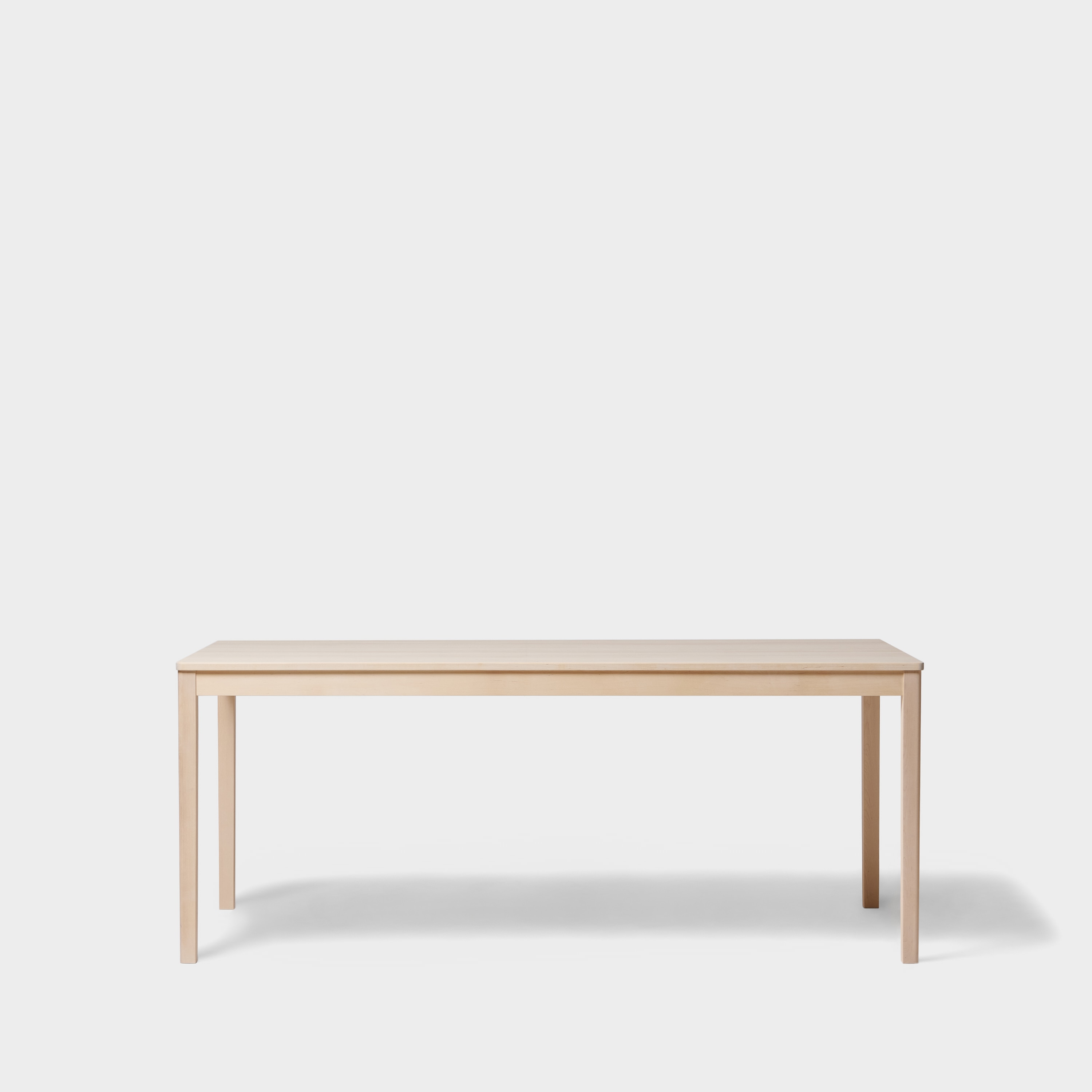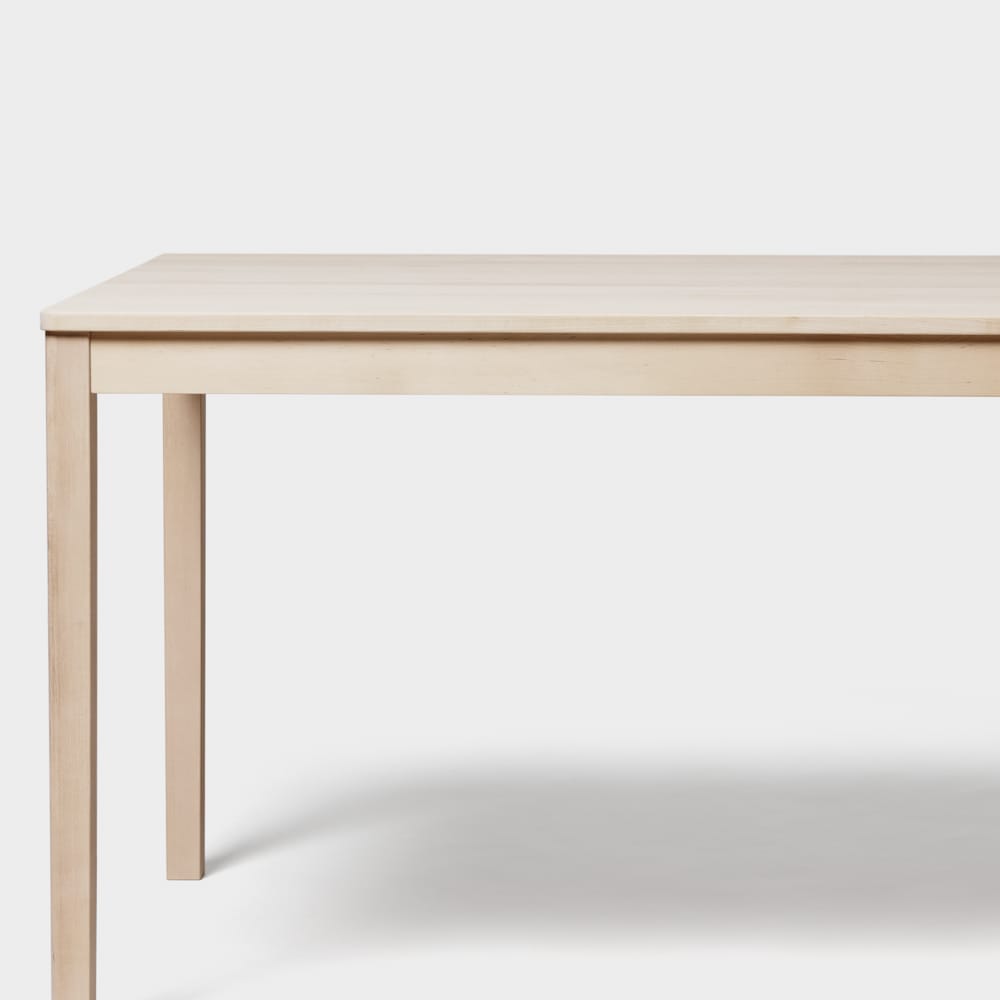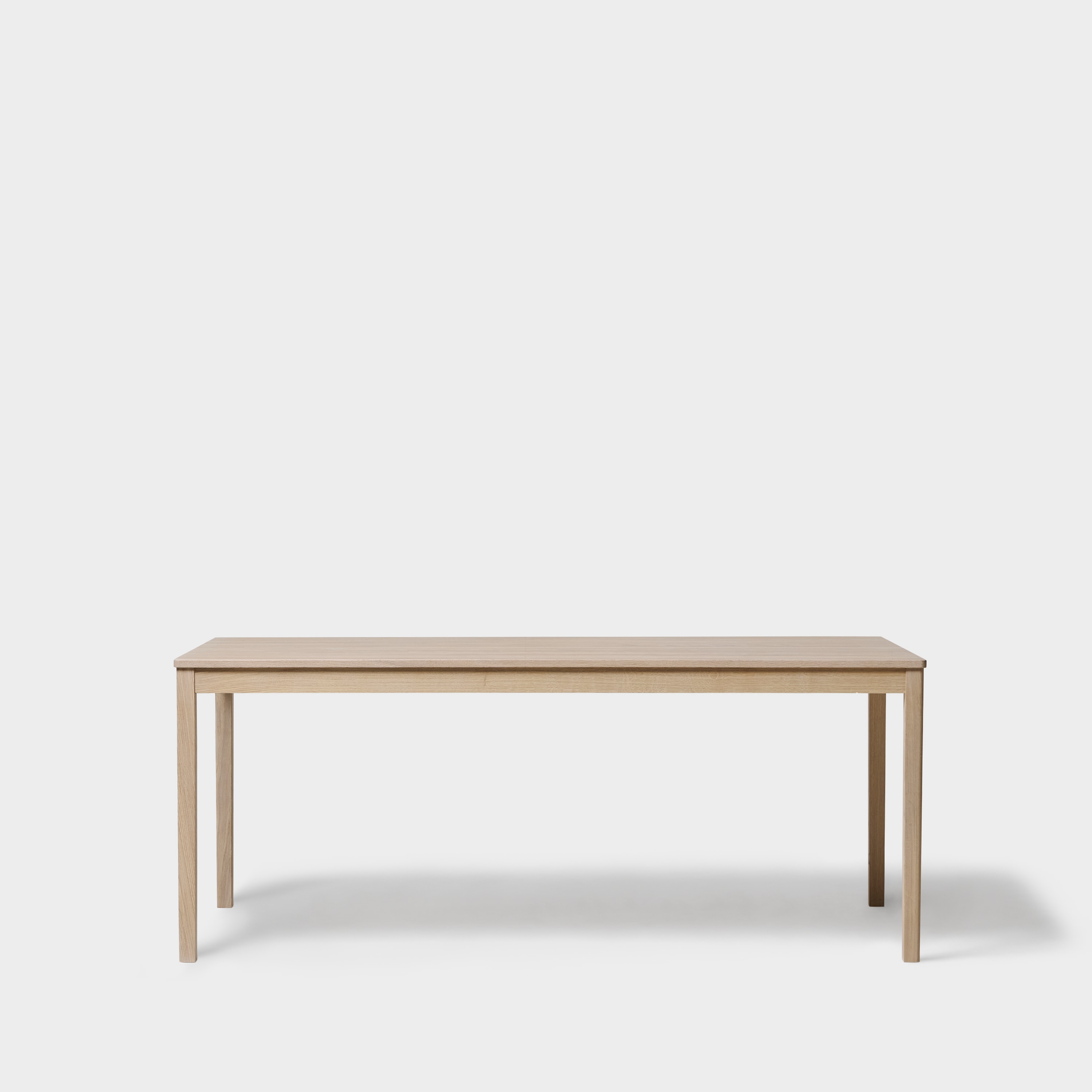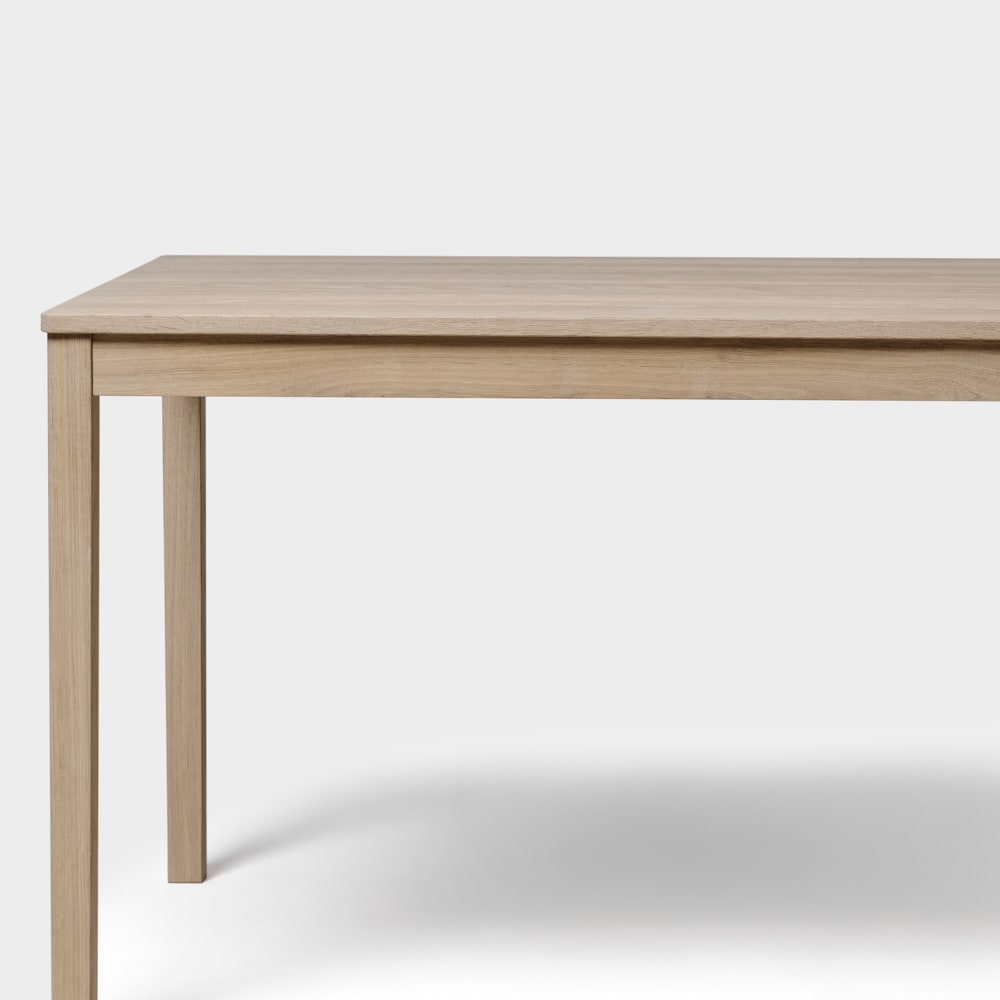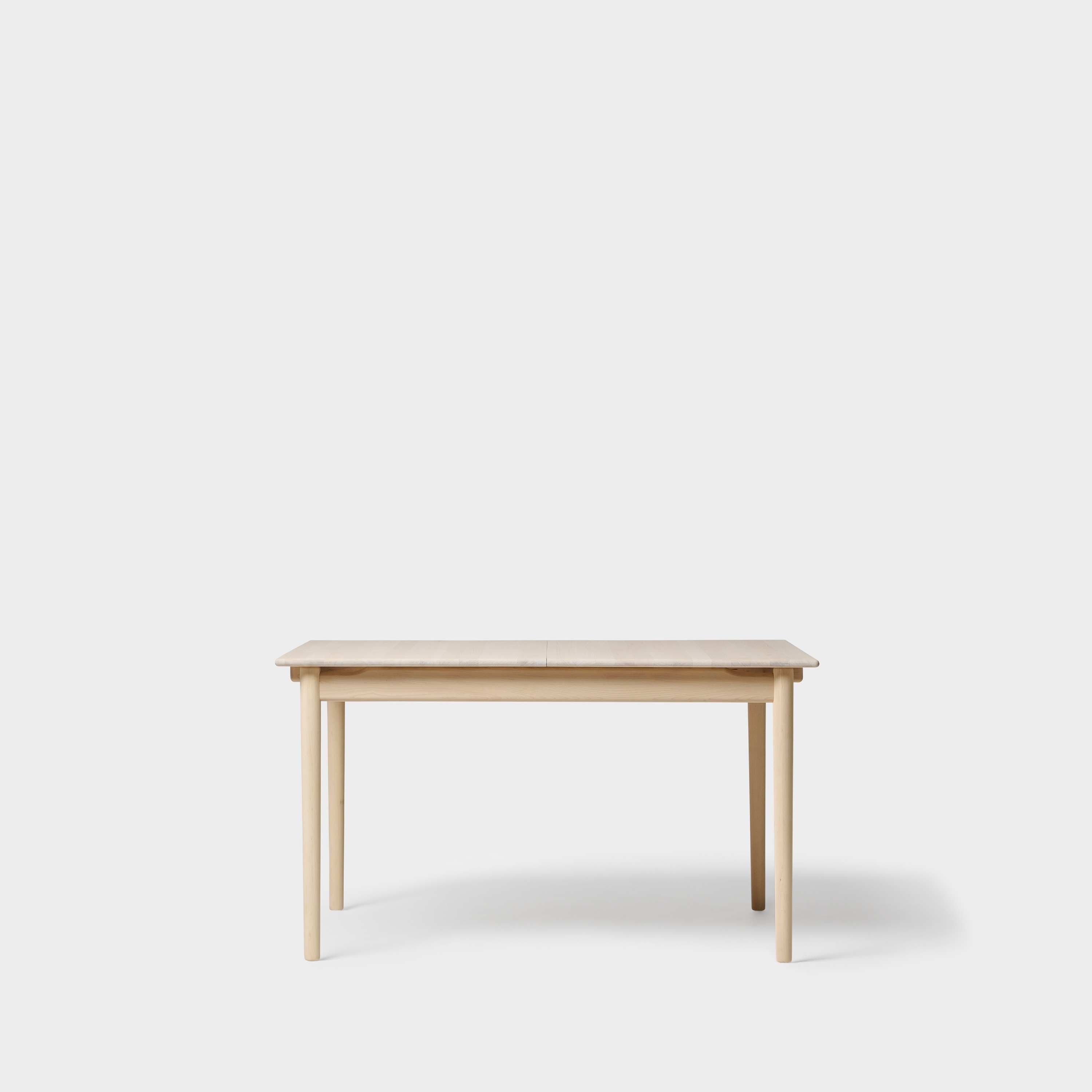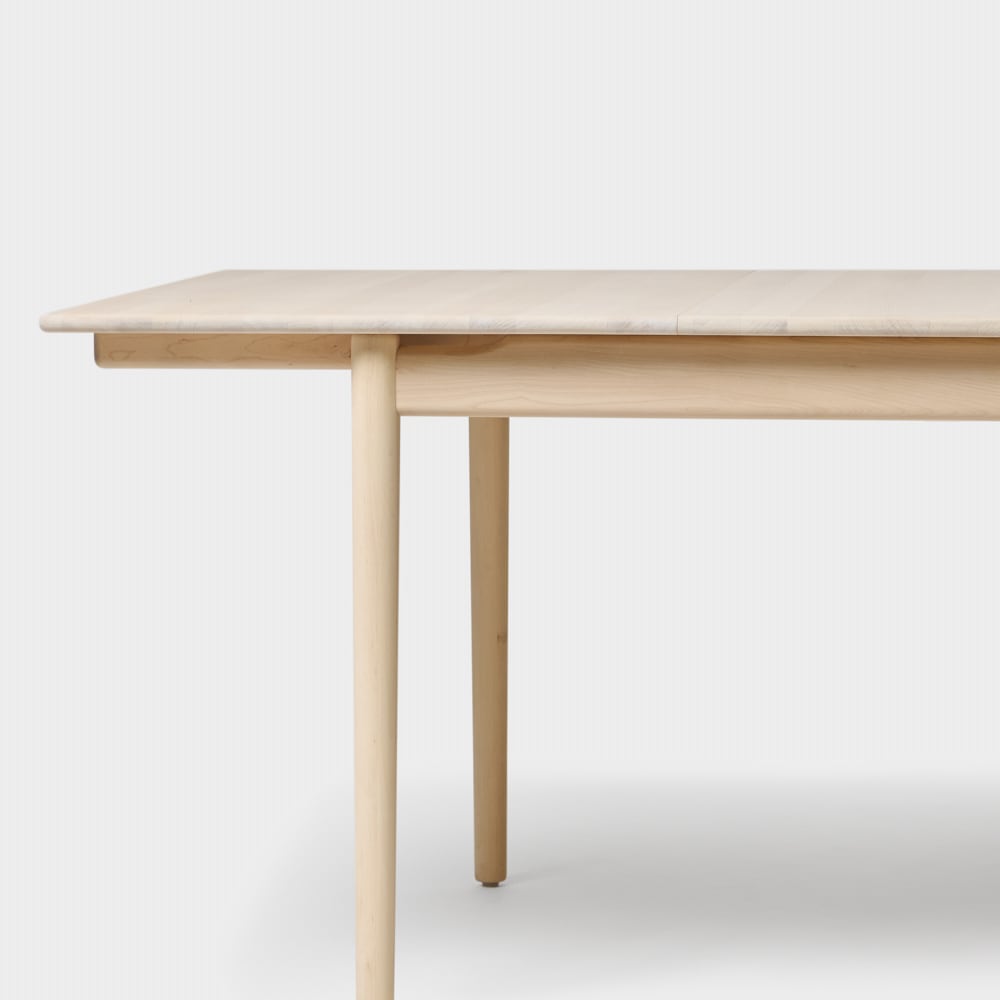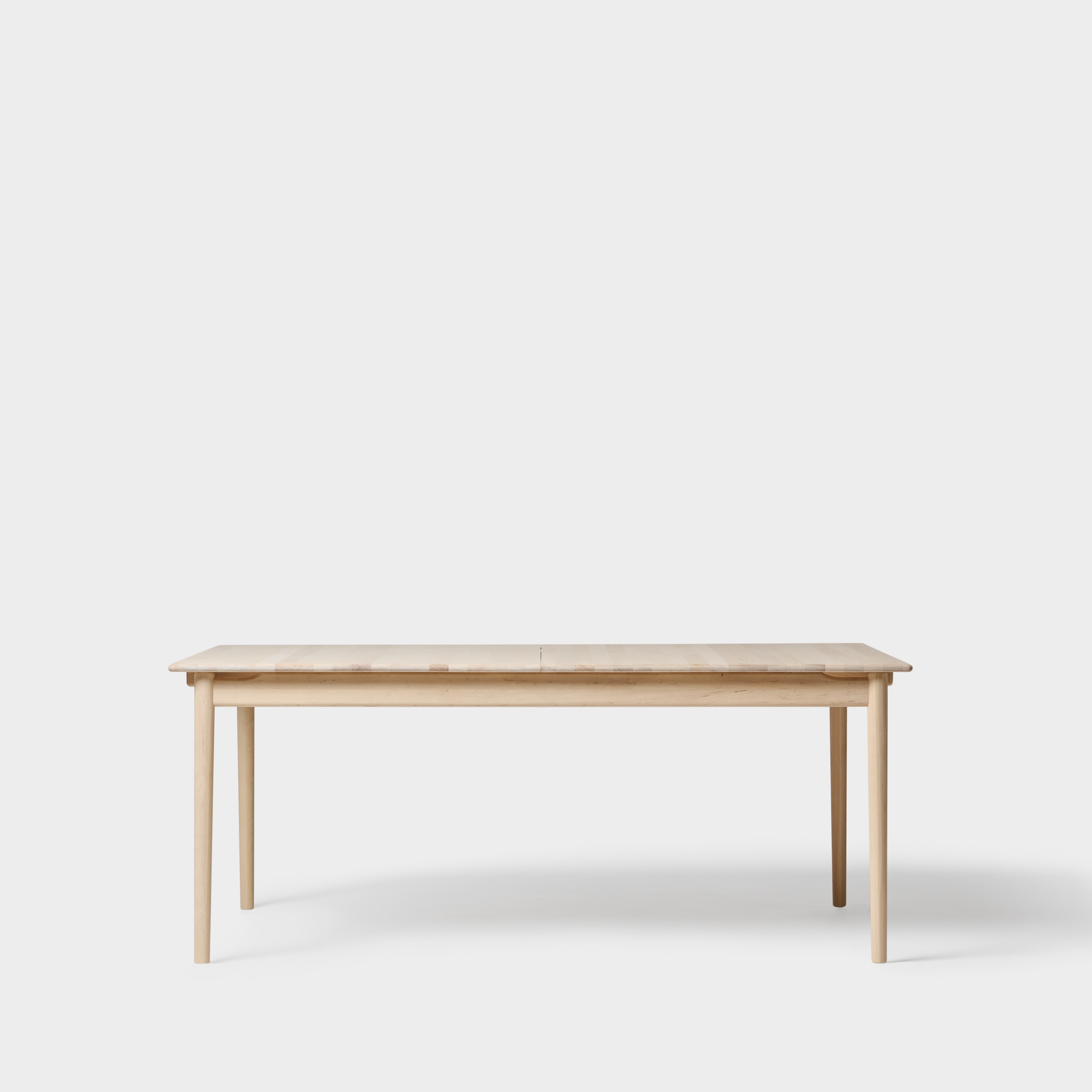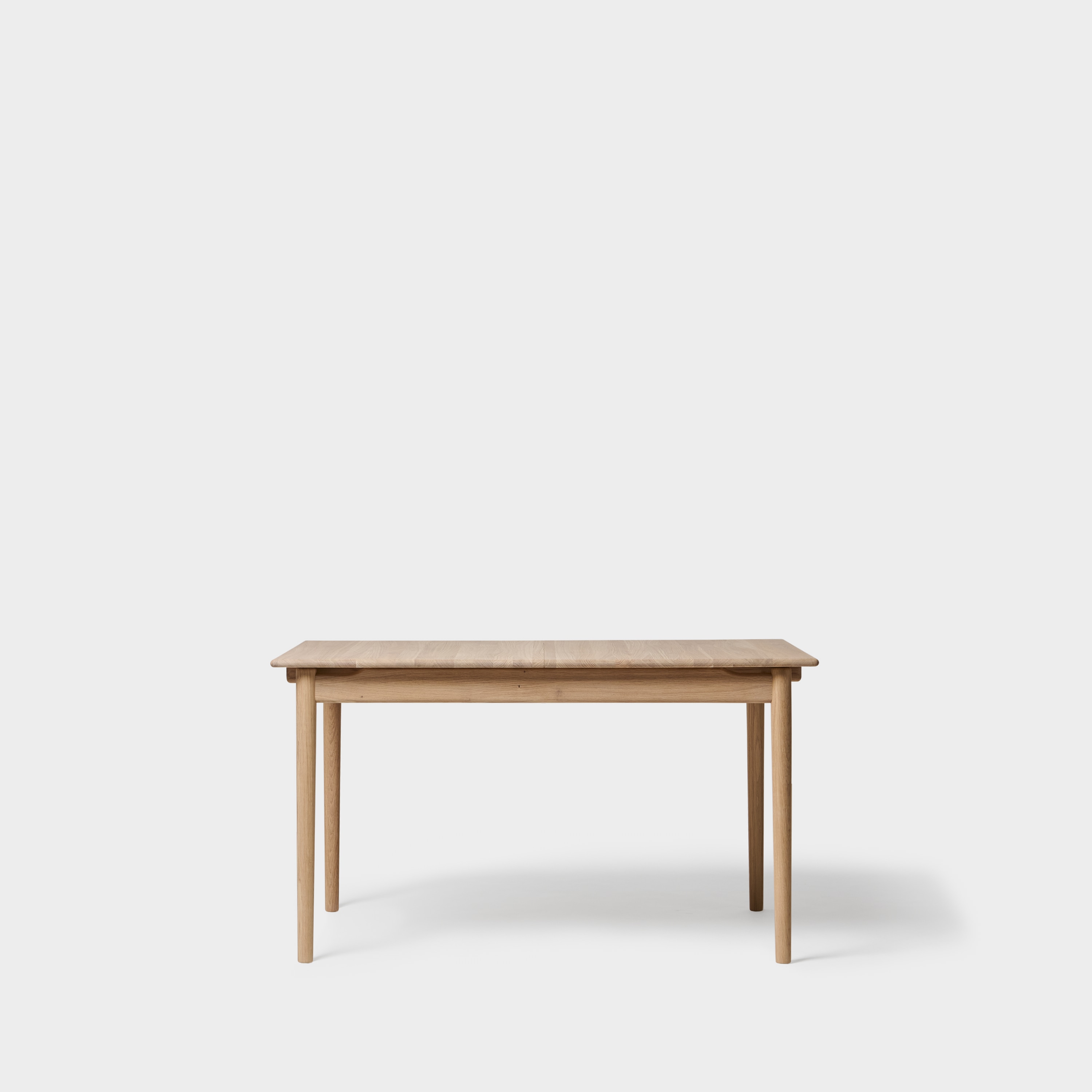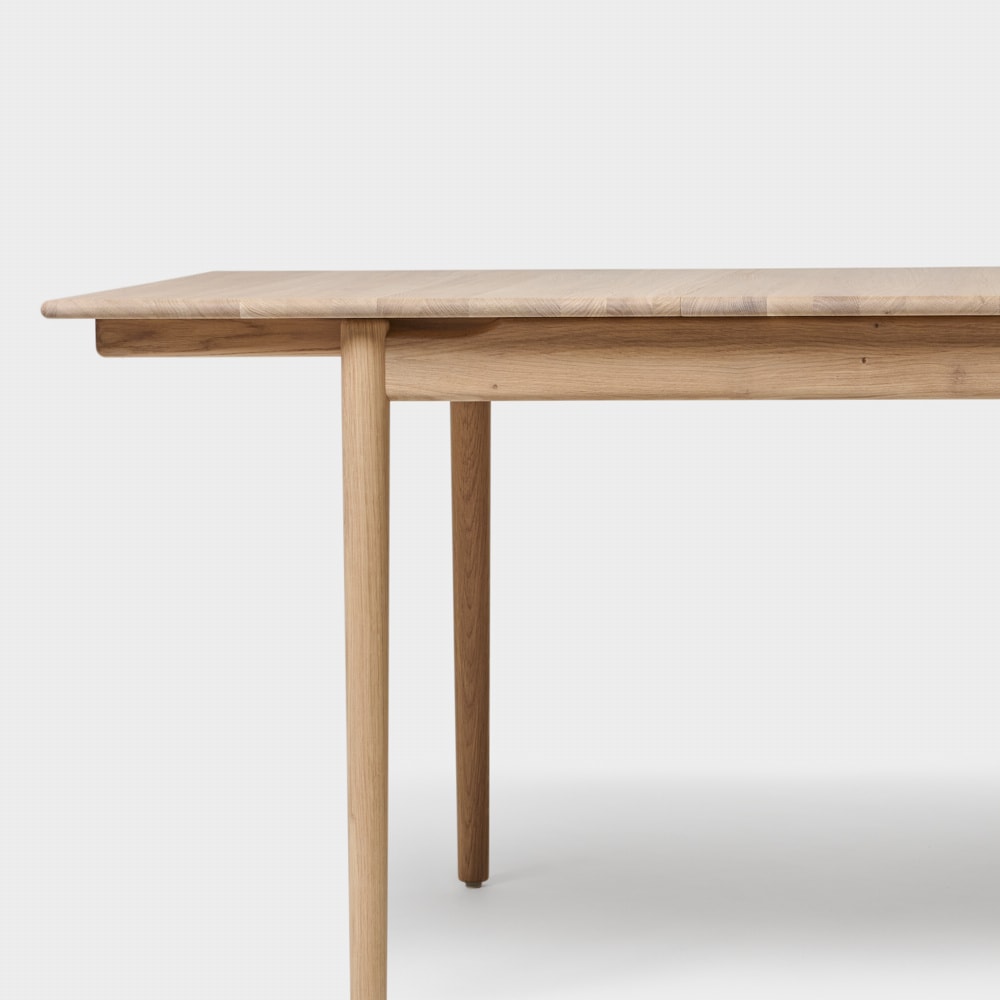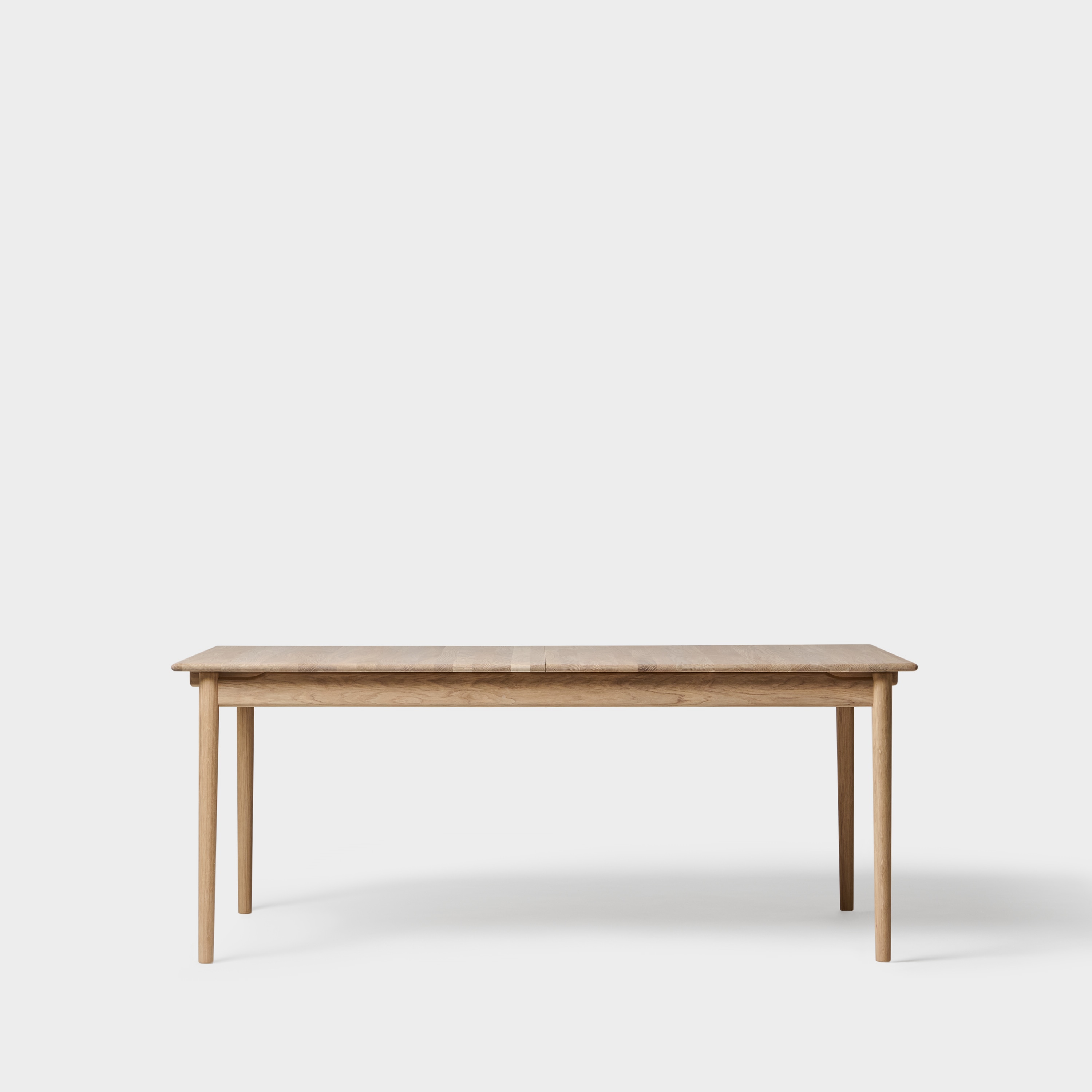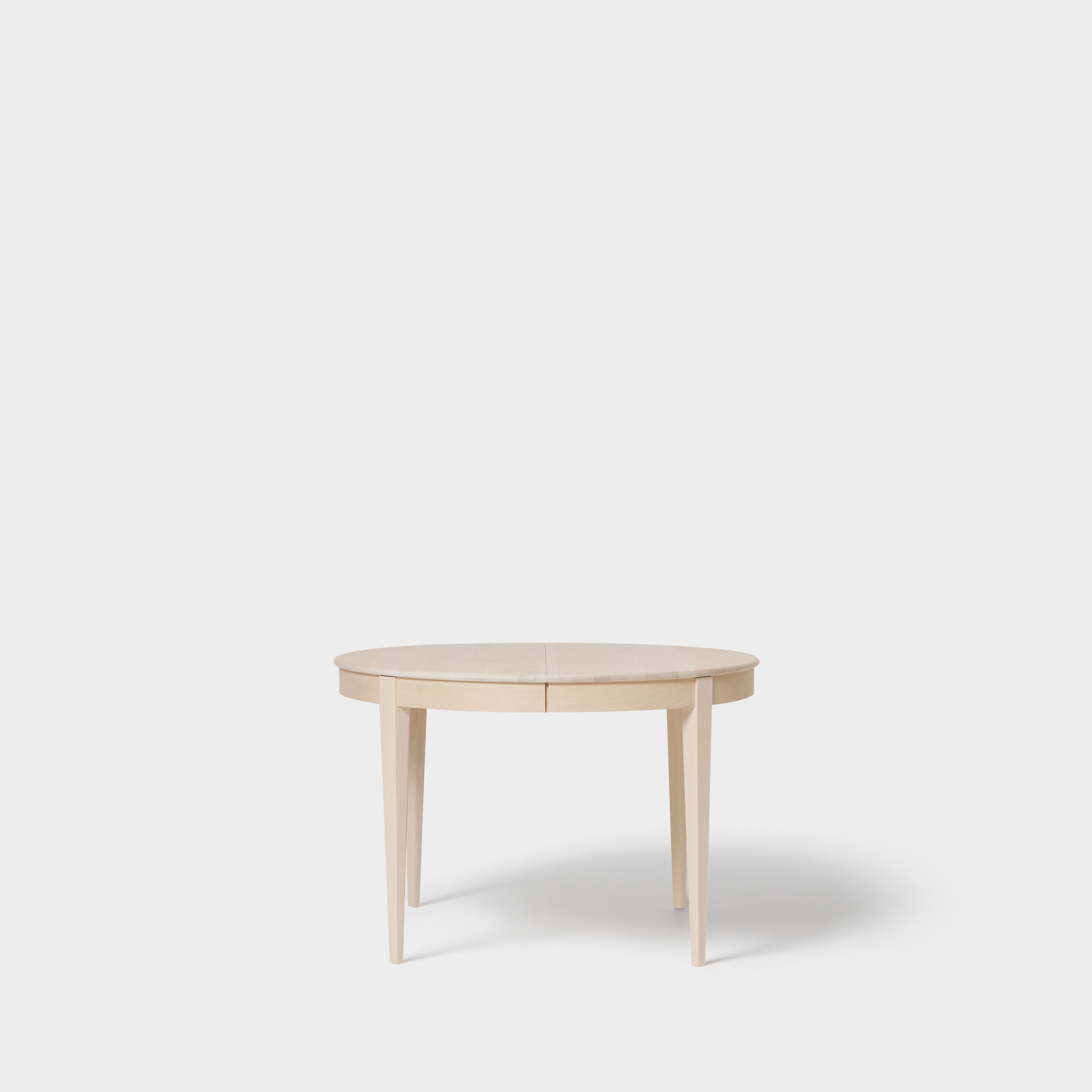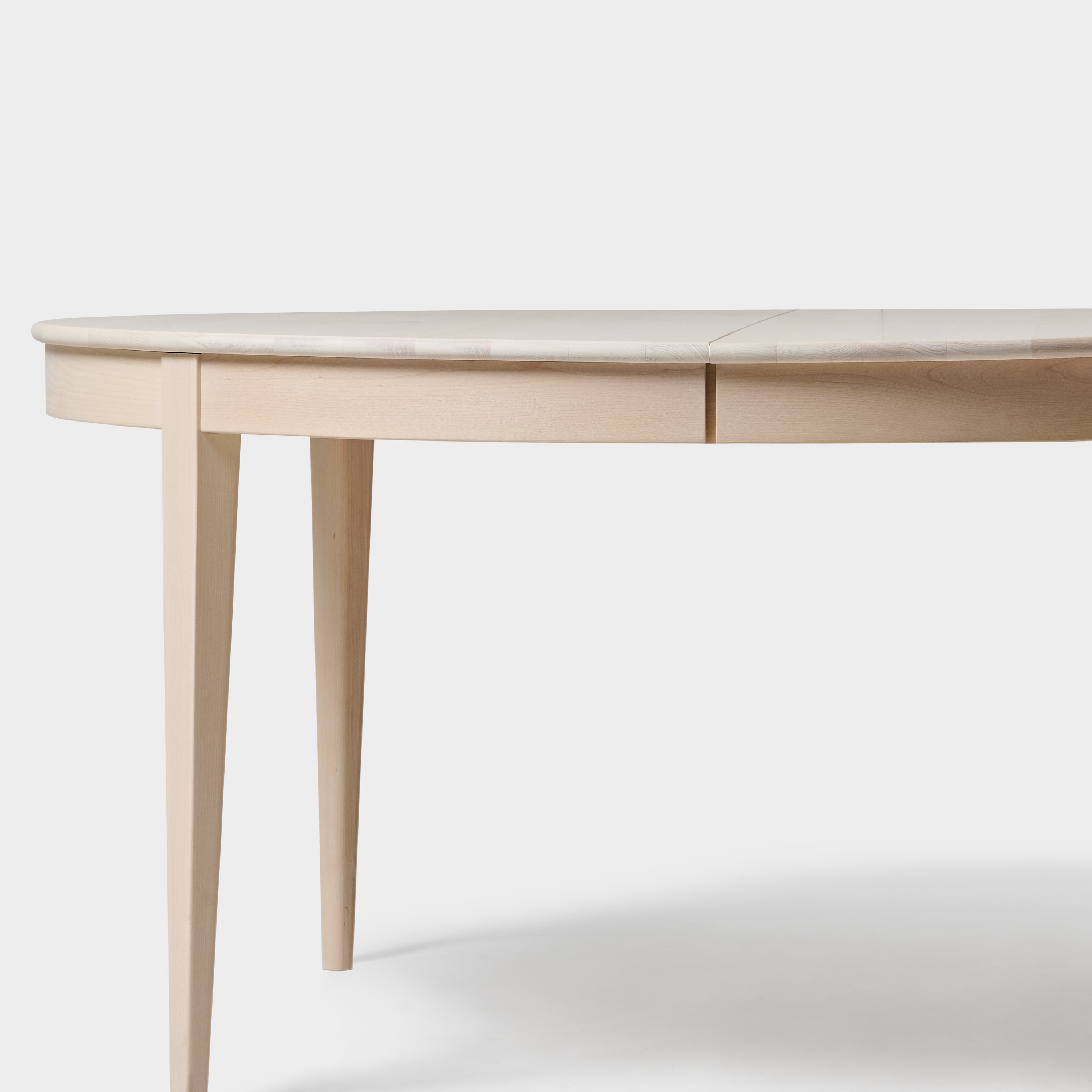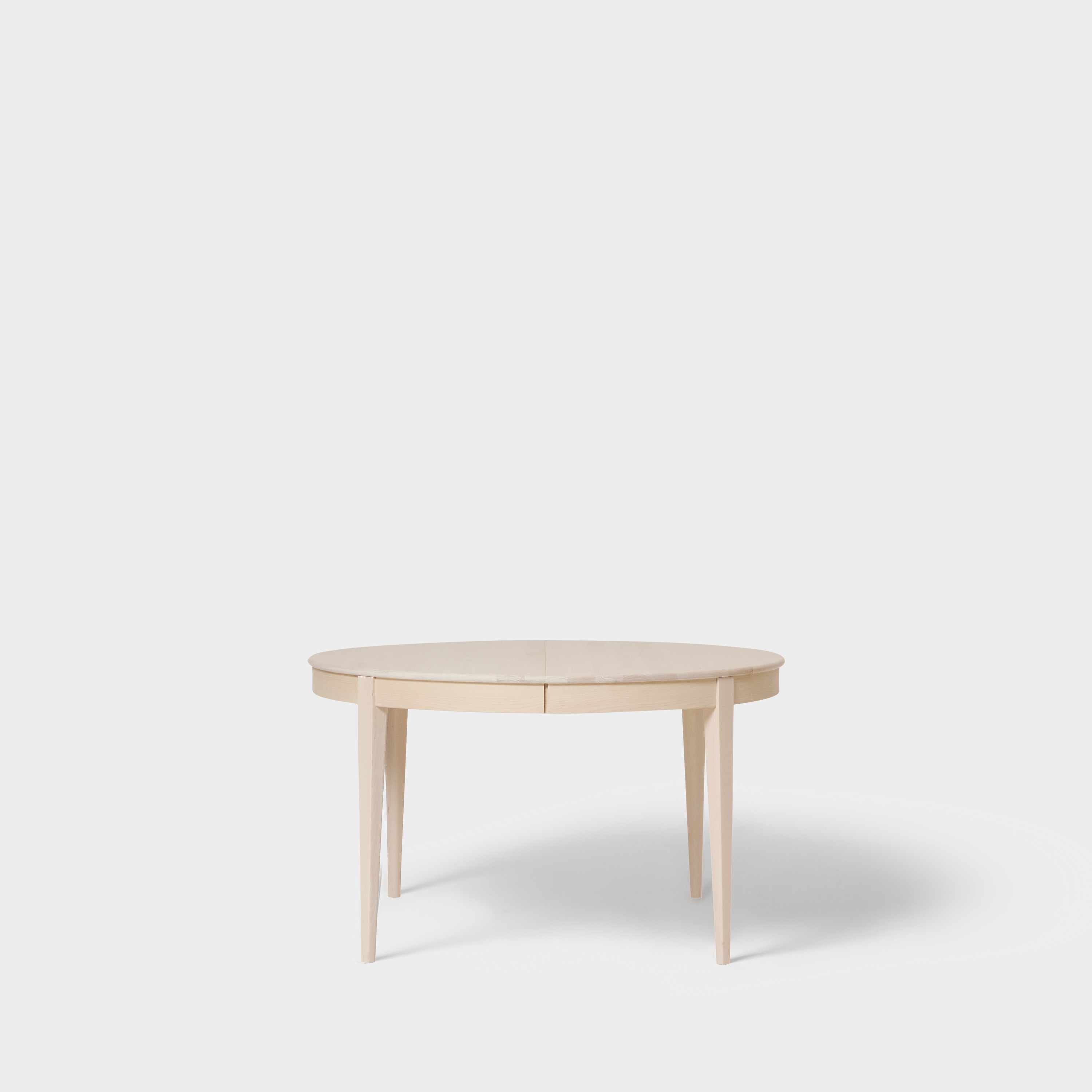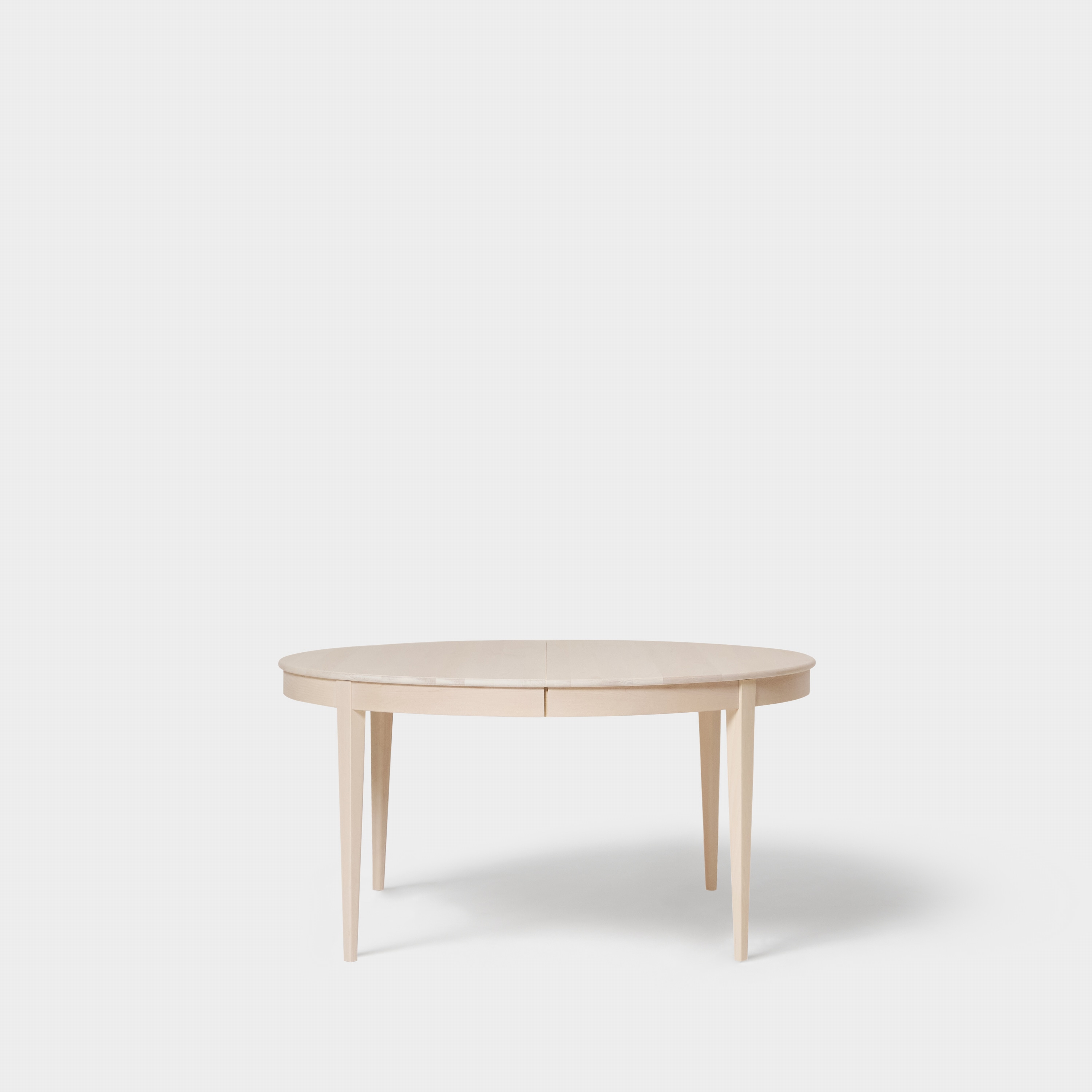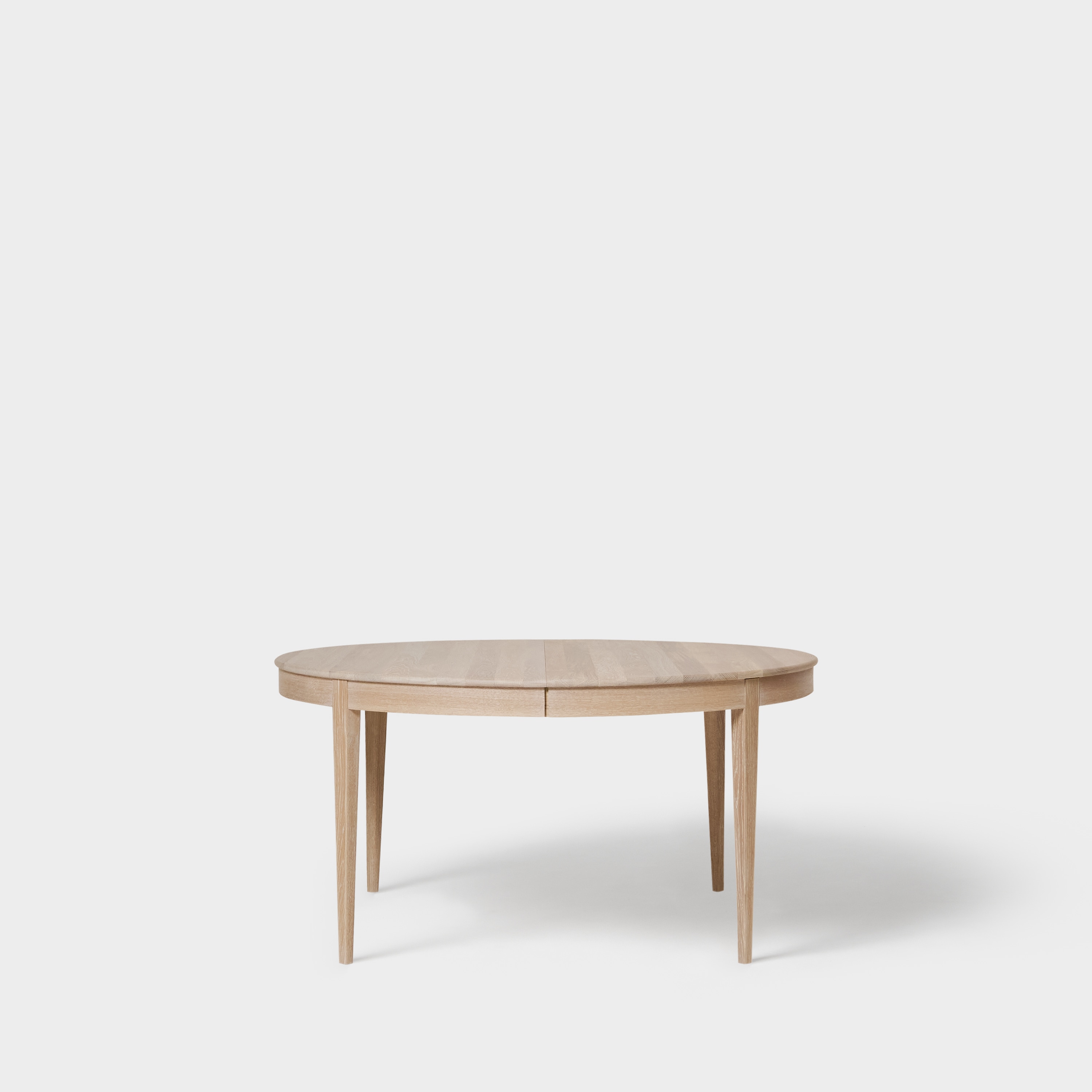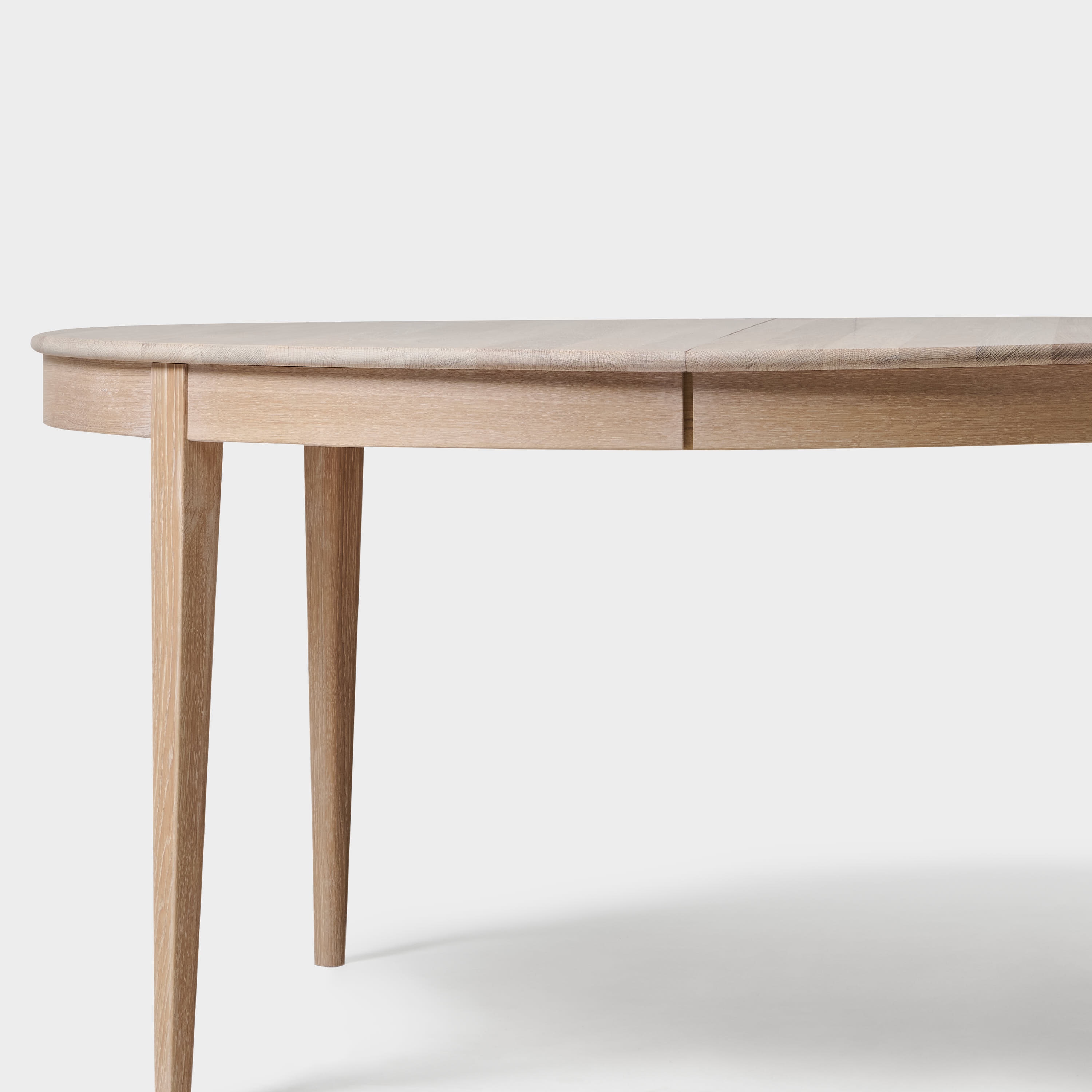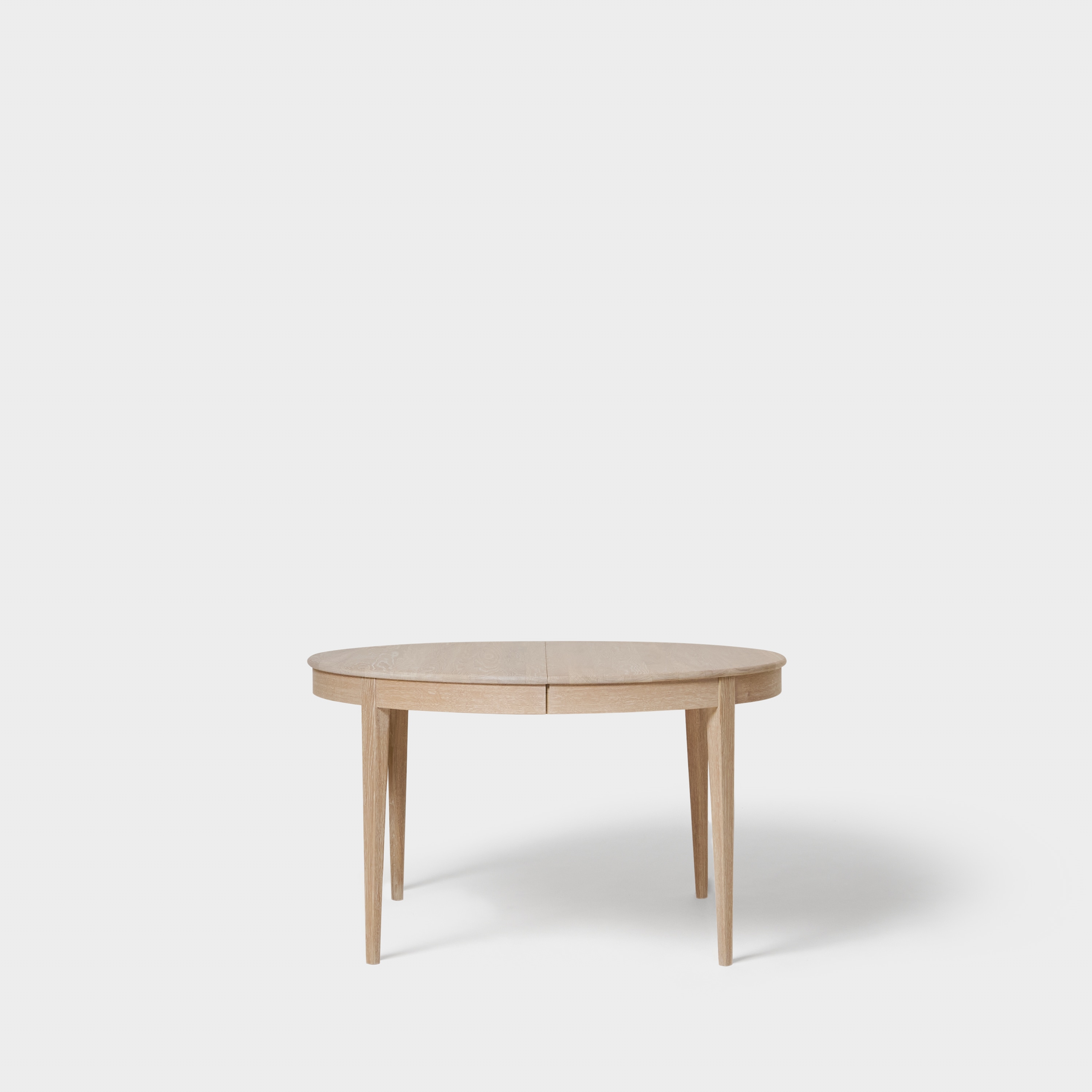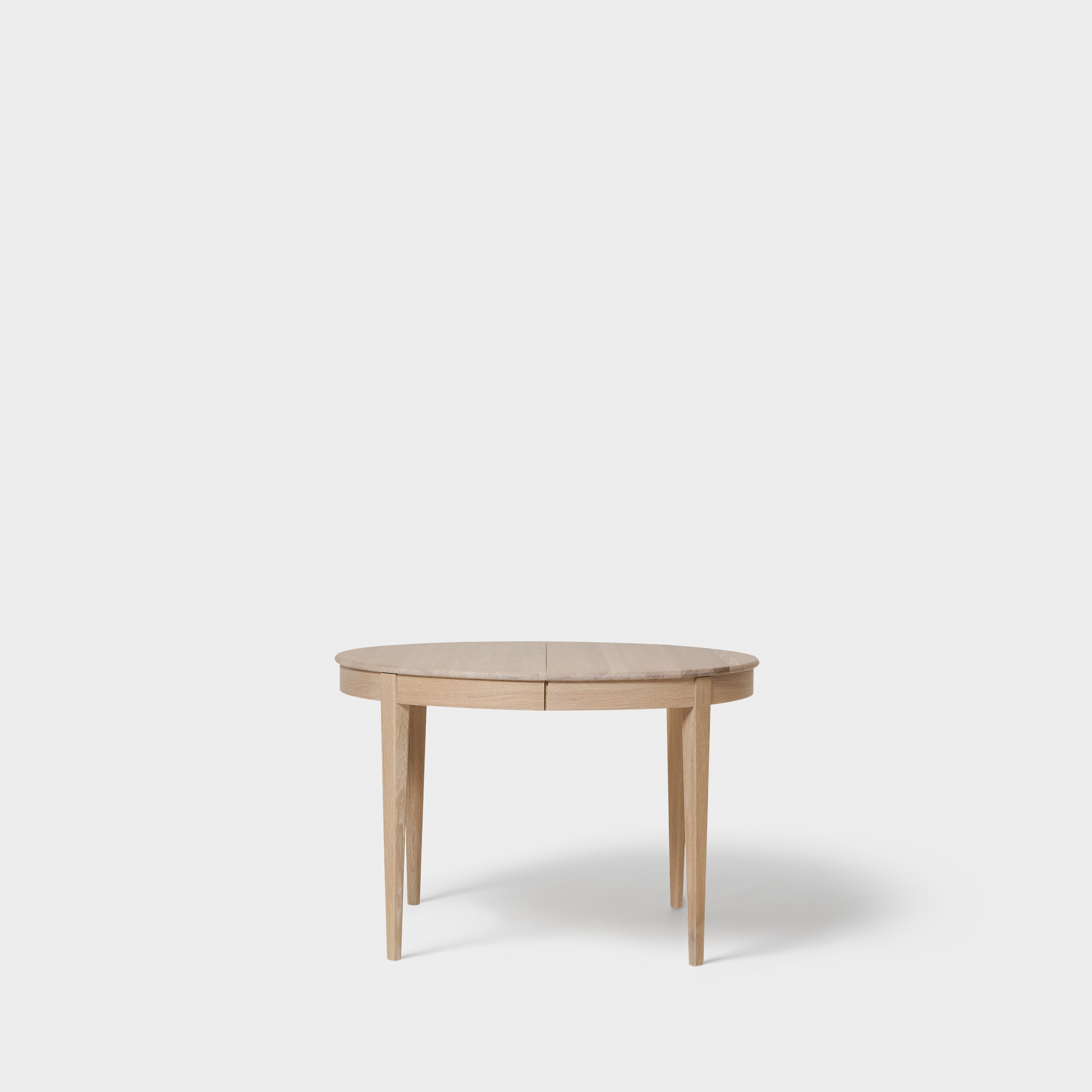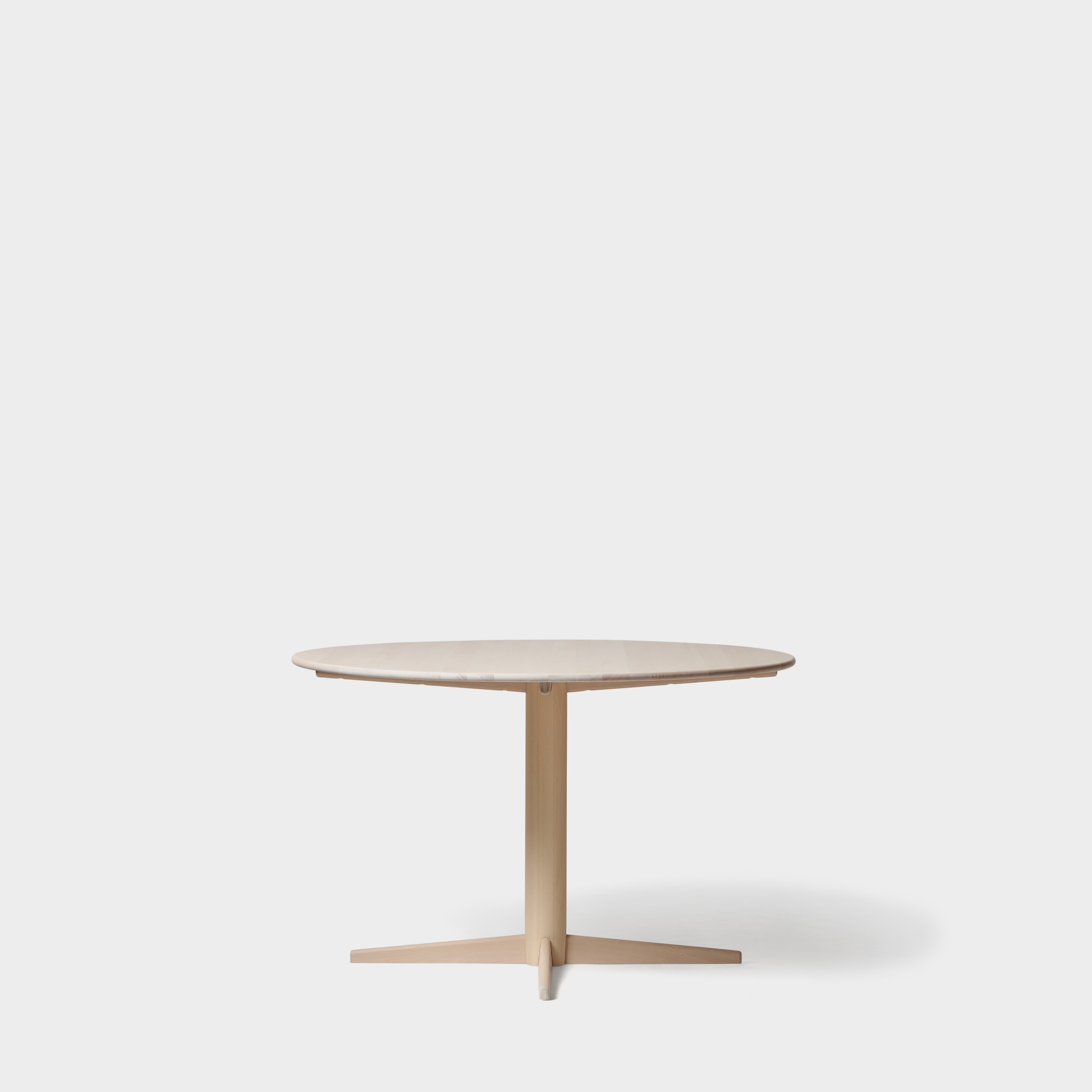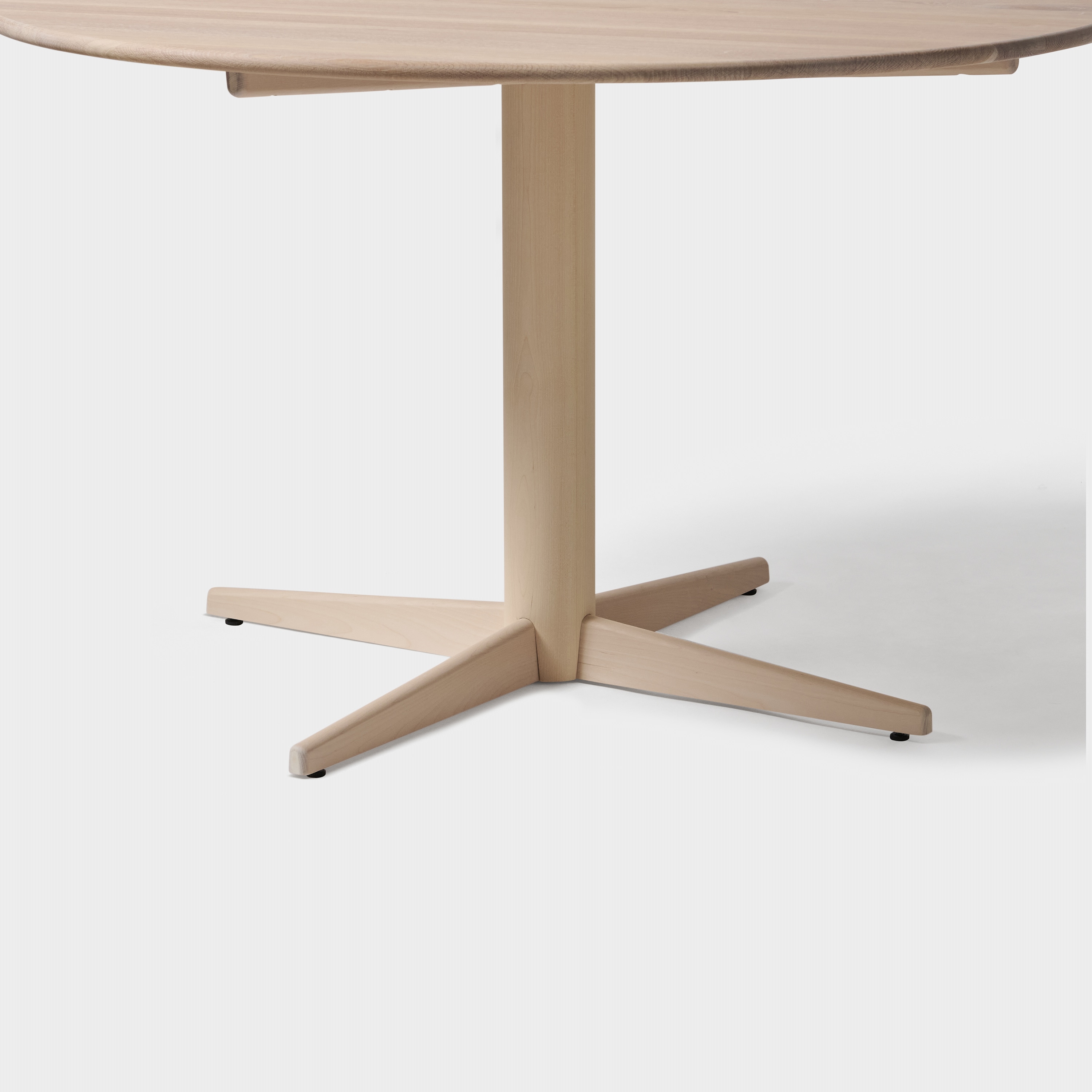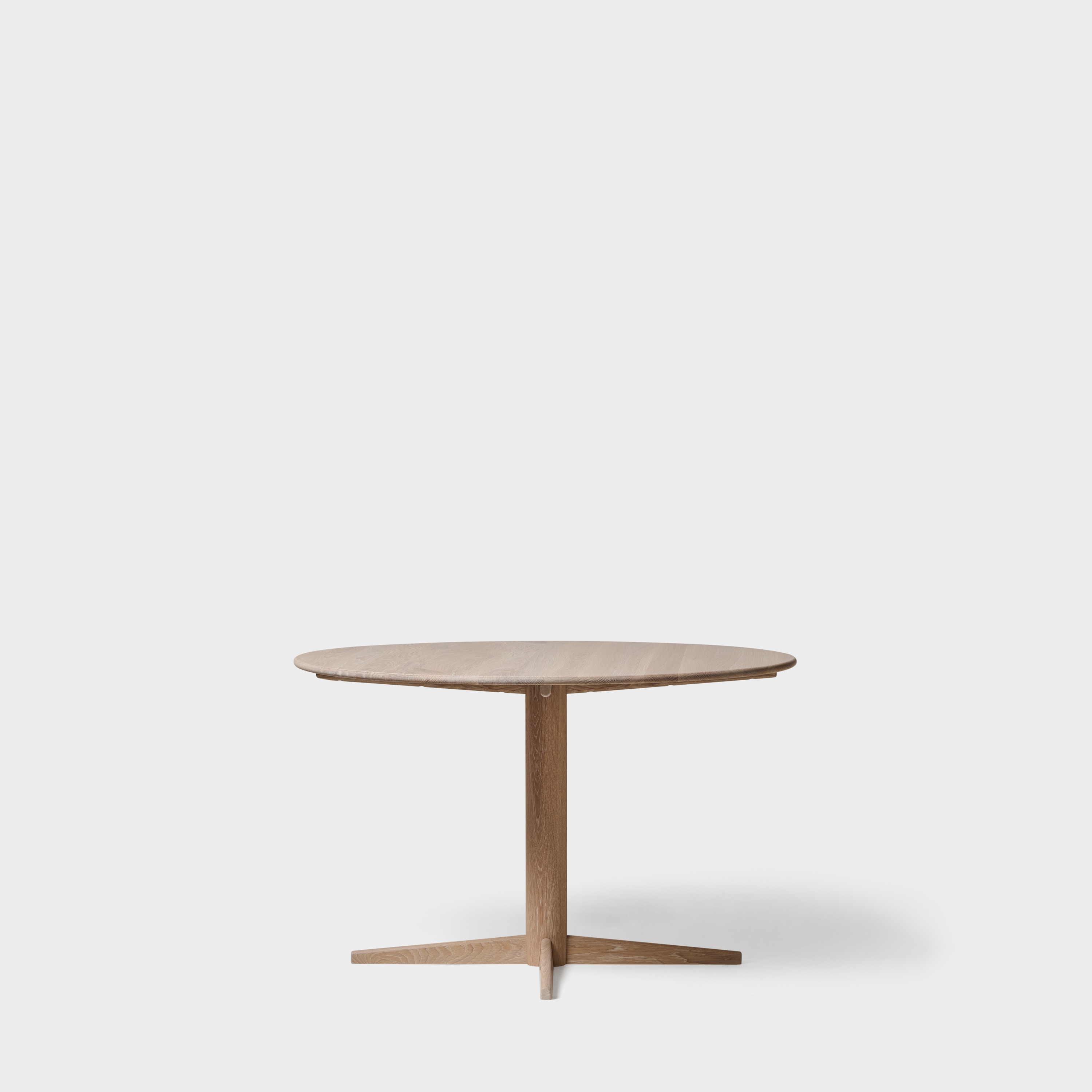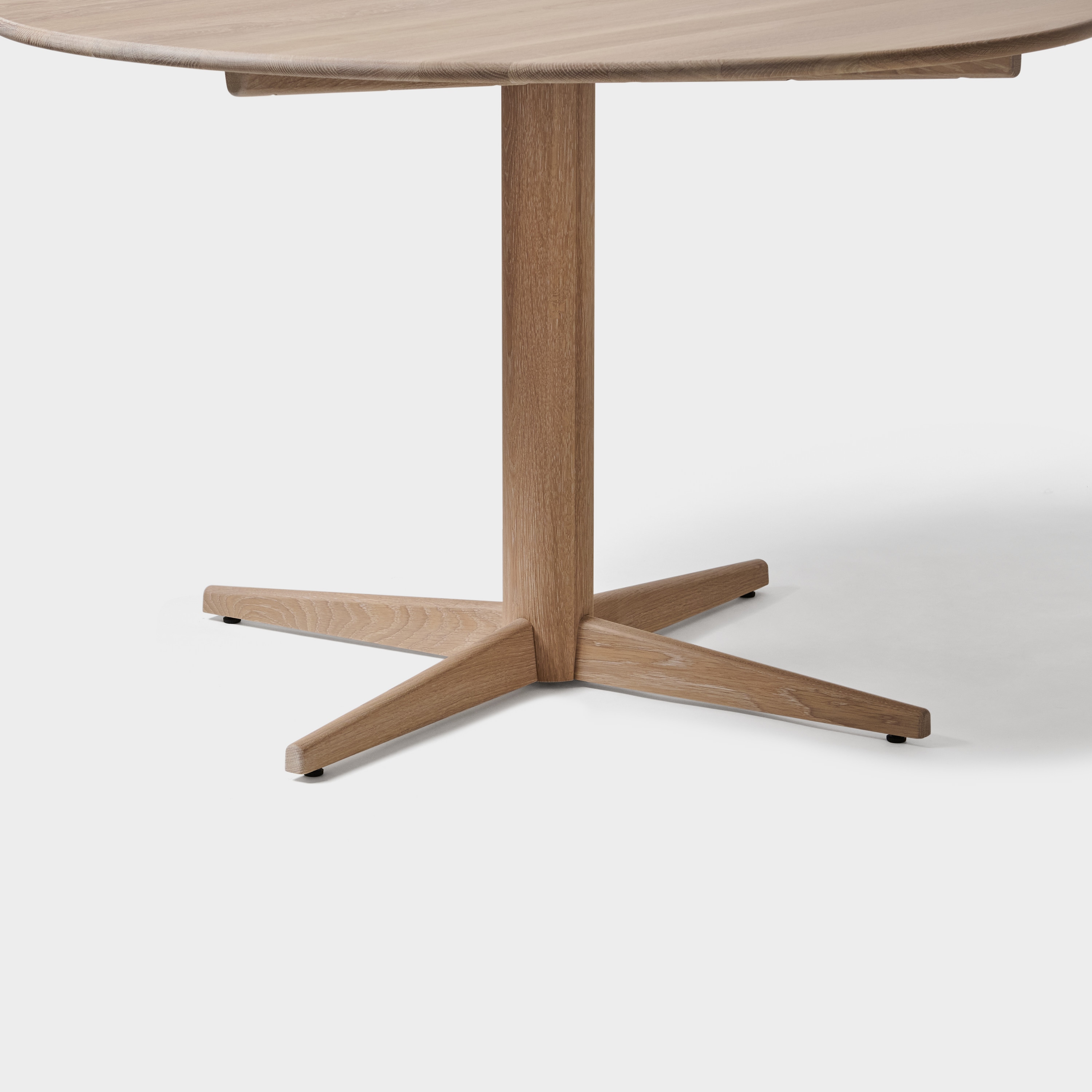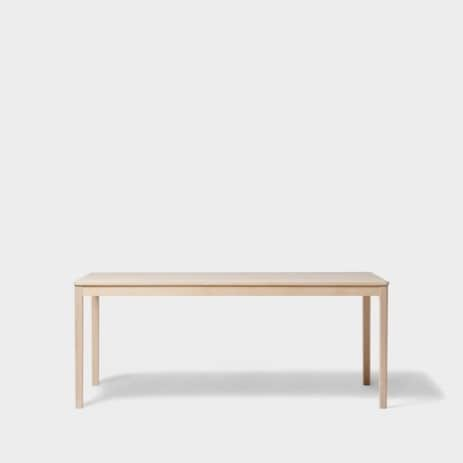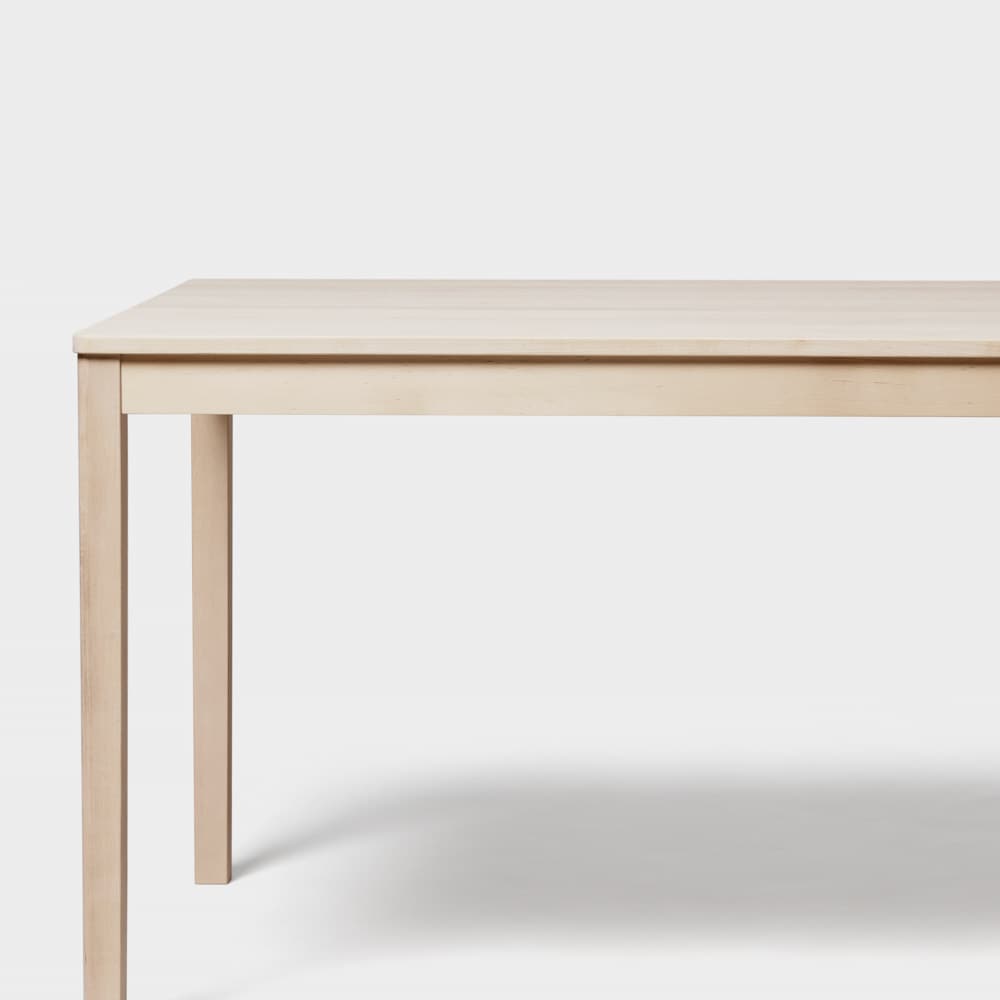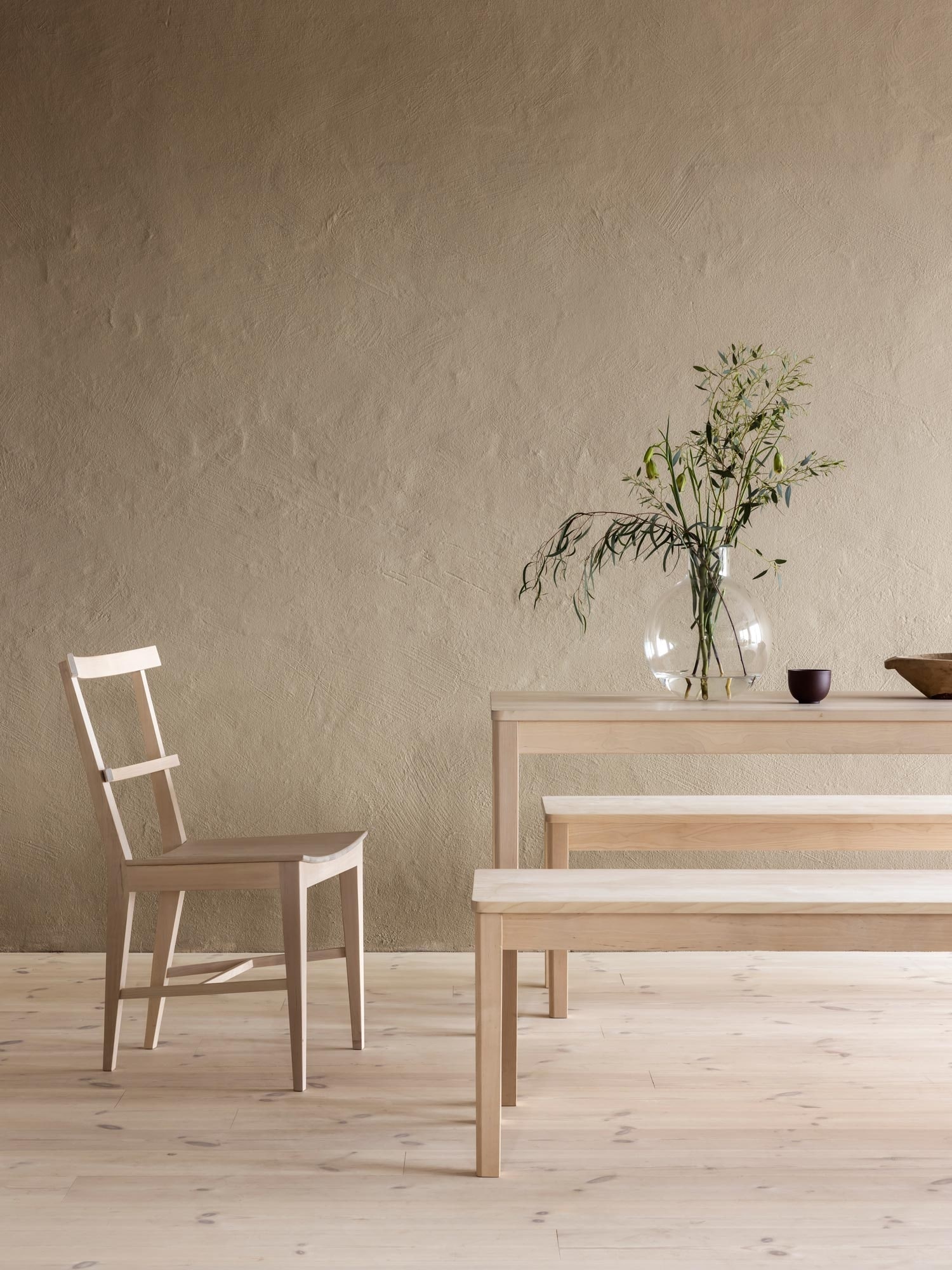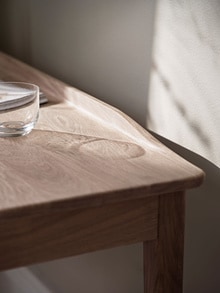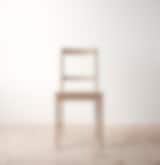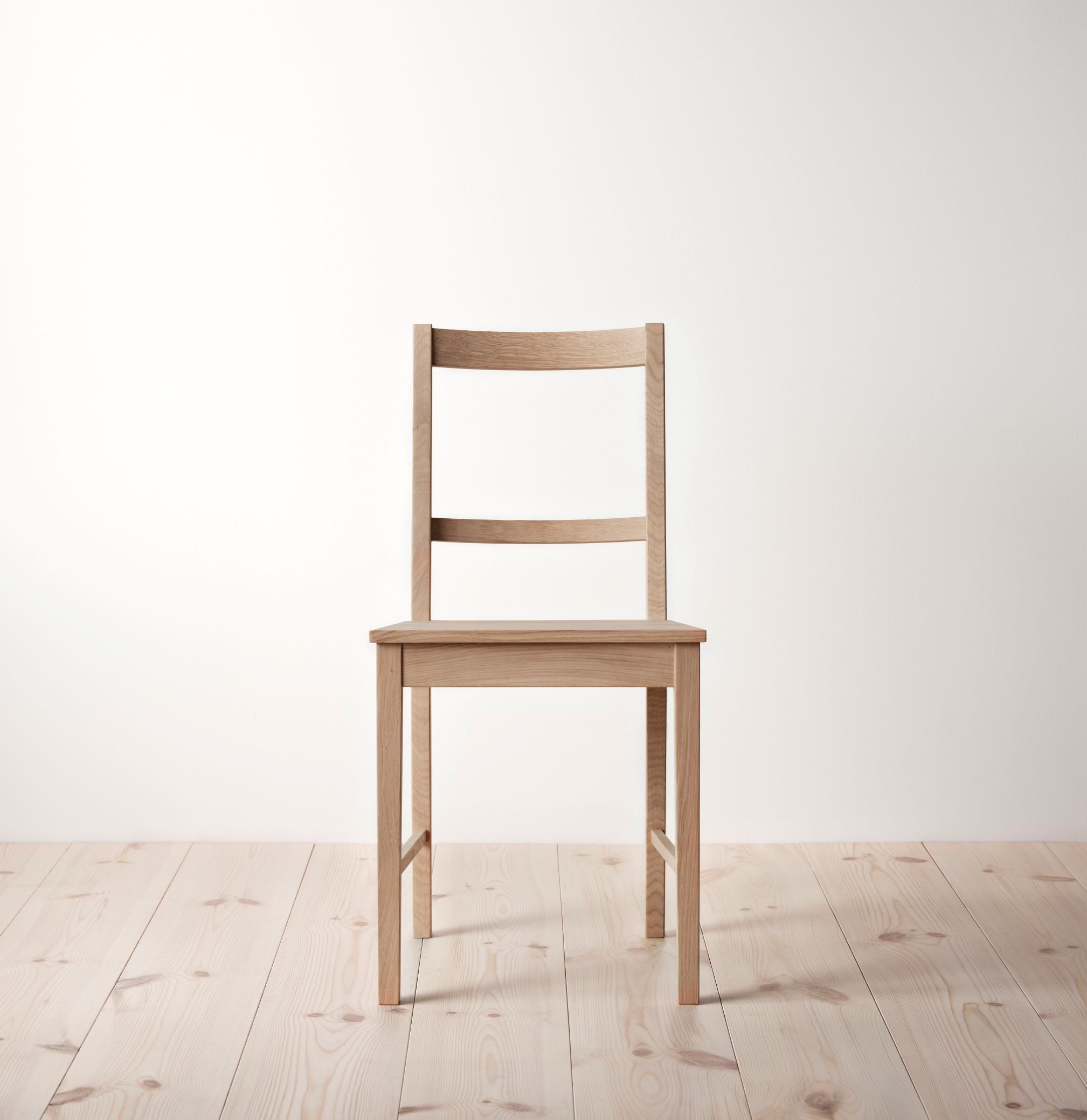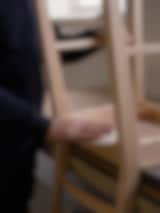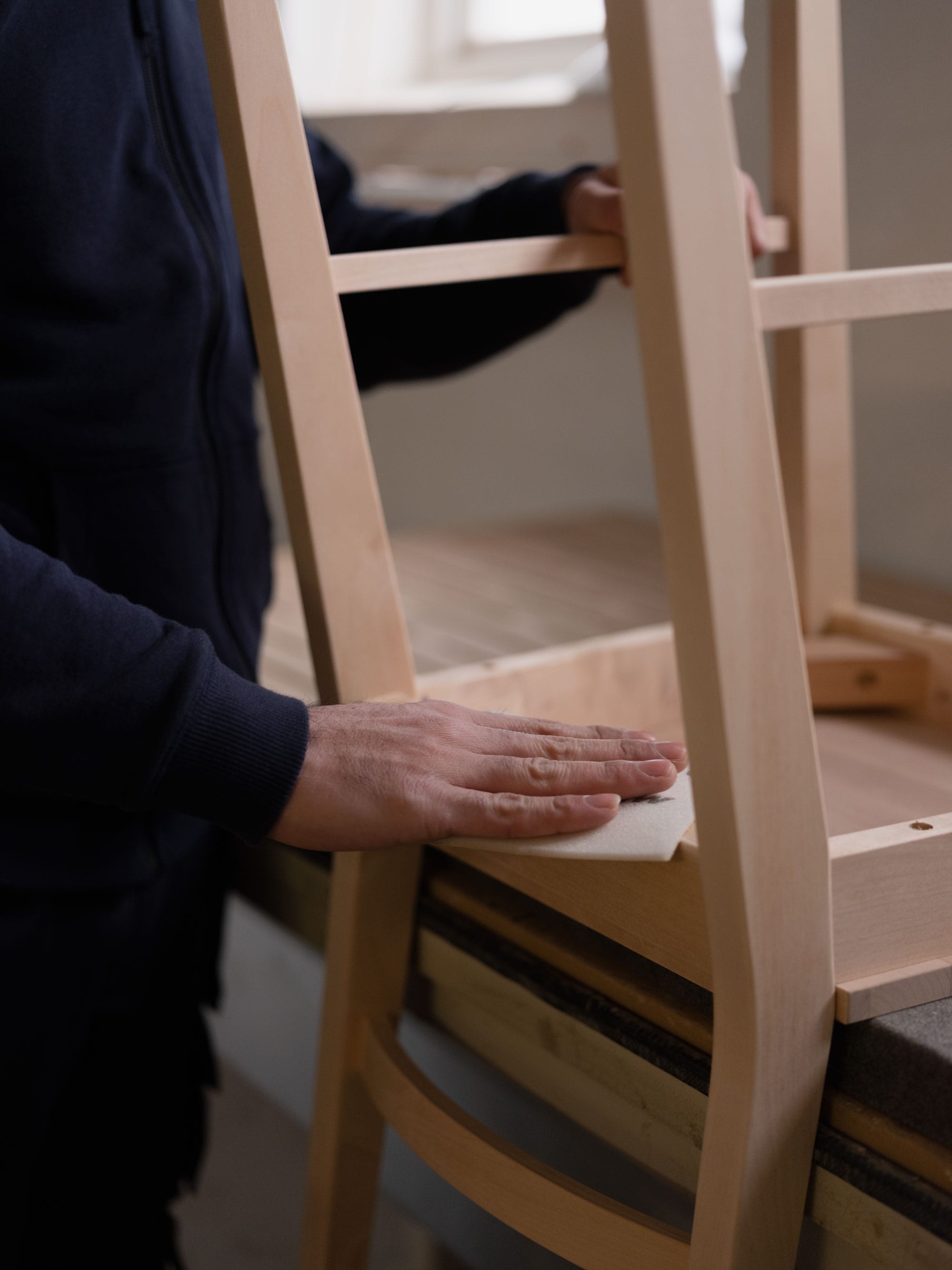Practical information about our dining tables
Here we have gathered facts and advice about our dining tables made of solid wood. Find answers to questions such as: Why does the gap between the tabletop boards change over time? Are there any tips on how to extend and retract extendable tables easily? How should I best store my extension leaves? What should I do with the table's support leg when extending or retracting the table? Can I do anything to ensure smooth friction on my wooden extension mechanism?
Gap between tabletop boards
On Norrgavel’s dining tables with space for an extension leaf, it becomes especially clear that wood moves. This is evident as the contact surfaces between the table sections can become convex or concave depending on the season/humidity. During high humidity (typically in summer), the edges of the table swell faster, creating a wider gap in the middle while the edges remain tight. In dry conditions (typically in winter), the opposite occurs, forming a concave gap at the ends while the center remains joined. It is fascinating to observe how solid wood changes with the seasons.
Gap in the apron
Solid wood is a premium natural material that reacts to seasonal changes. For this reason, the Round dining table is designed with a gap in the apron to prevent the tabletop from shrinking too much during low humidity. The gap in the apron will decrease when humidity is low and be at its widest when humidity is high. Working with solid wood requires extensive knowledge and well-thought-out construction techniques – and that is part of the charm of this exceptional material! This is also what makes solid wood furniture so special compared to veneered alternatives.
Handling the extension mechanism
Avoid lifting the table ends when pulling the table apart, as this may cause the extension leaf to get stuck. The best way to separate the table is by pulling each short side straight back (not sideways) while keeping the tabletop level. With the right technique, it glides apart smoothly – experiment to get to know your table. Keep in mind that wood is a “living” material, and how easily the table extends or retracts depends on the humidity on that particular day. You could say that the table has a personality – some days it cooperates easily, and other days it can be a bit stubborn. This is part of the beauty of having furniture made from natural materials.
Note! Avoid keeping the support leg extended while pulling the table apart, as it may get stuck on the floor or carpet and become damaged.
Extendable tables
Remember! Loosen the wing nuts when extending the table and tighten them when the extension leaf is in place.
Round dining table
Make sure to tighten the table’s fastening brackets – both when the extension leaf is removed and when it is in place. See separate assembly instructions.
Extension mechanism
Our dining tables are made of solid wood, including the extension mechanism in the Round dining table, which is traditionally crafted from wood (instead of metal, which is common in newer tables). Wood expands and contracts with the seasons, and friction can occur when wood moves against wood. To make extending and retracting the table easier, we recommend rubbing all moving parts of the extension mechanism with a standard candle. Whittle the candle with a knife to ensure you can reach inside the track. Repeat as needed – how often depends on how frequently the table is extended, as some wax will wear off with each use.
Storing extension leaves
Store extension leaves in a place where humidity and temperature remain as stable as possible to avoid cracks in the wood. Do not store extension leaves directly on concrete floors, as they often retain moisture, which the wood may absorb. If the extension leaves are stored in darkness while the table is exposed to daylight, differences in wood color may develop over time.
Two extension leaves fit inside the Extendable table.
Support leg
The round dining table has a support leg in its construction. Always use the support leg when the extension leaf is in place, as the table construction may otherwise be overstrained and risk damage. When no extension leaf is used, the support leg is not needed. Avoid keeping the support leg extended while pulling the table apart, as it may get stuck on the floor or carpet and become damaged.
Furniture made of solid wood
At Norrgavel, we love using solid wood for our furniture – this vibrant, durable, and uniquely beautiful natural material. No two pieces are exactly alike, as each tree leaves its own unique mark on every piece of furniture. Discover our wood guide for plenty of inspiration, facts, and advice.
